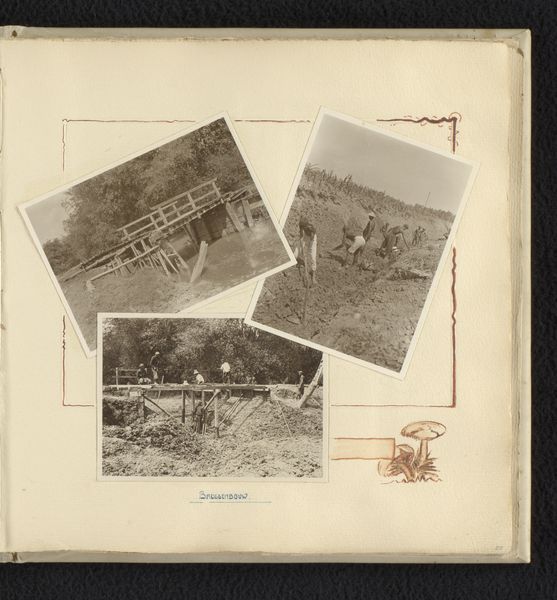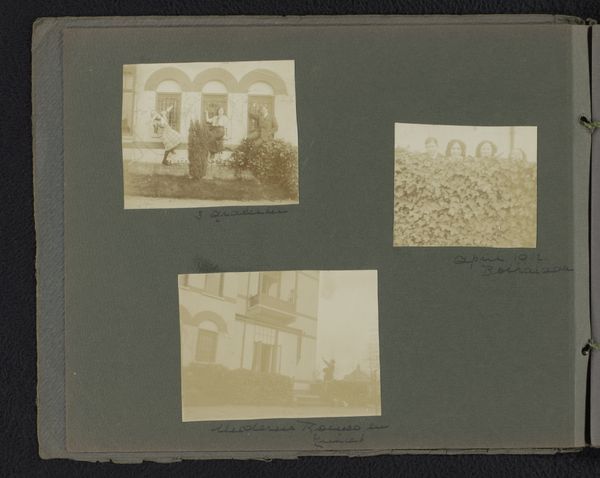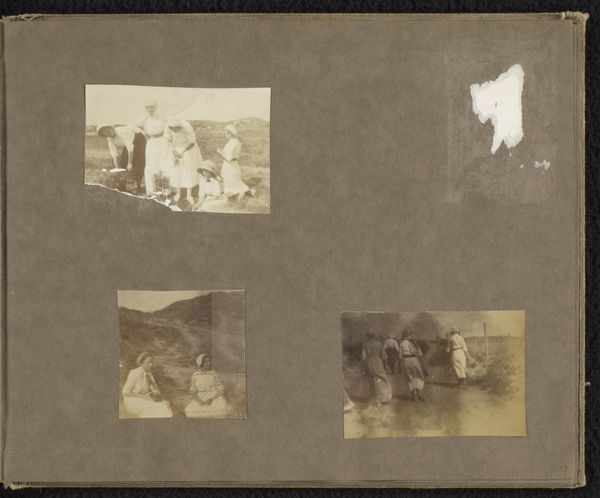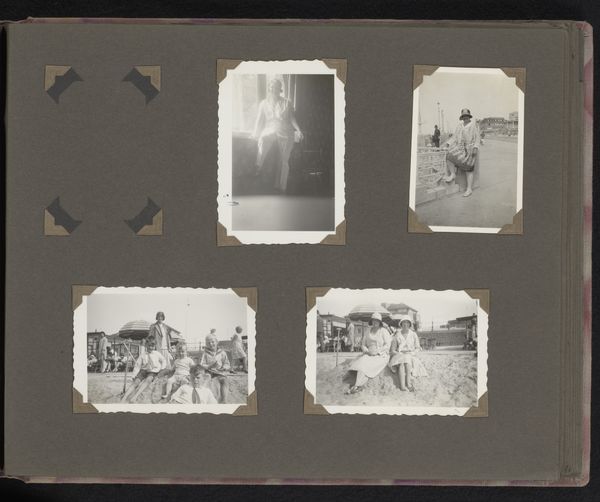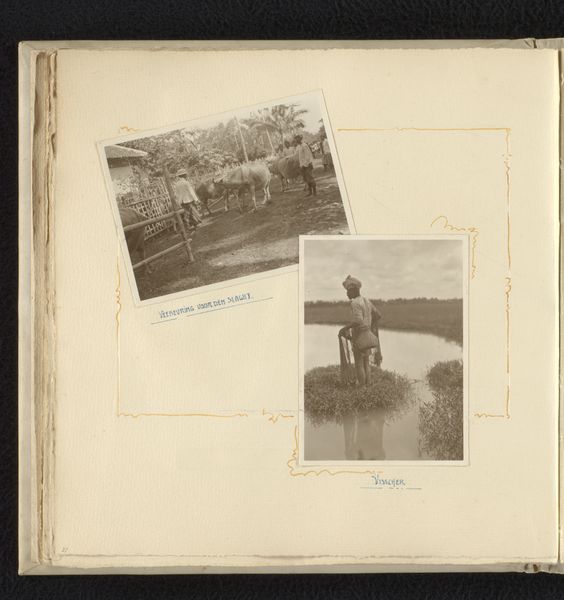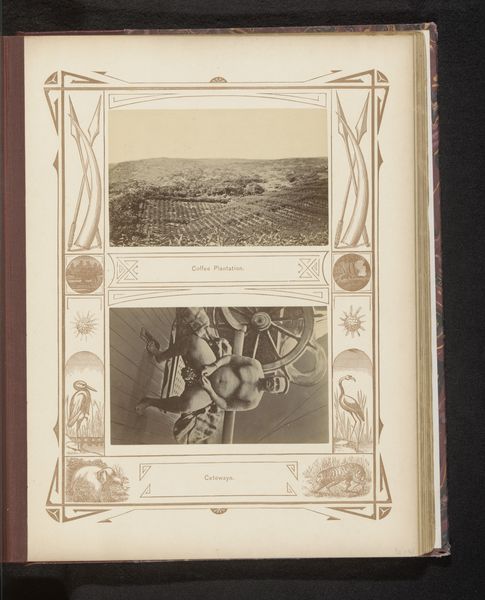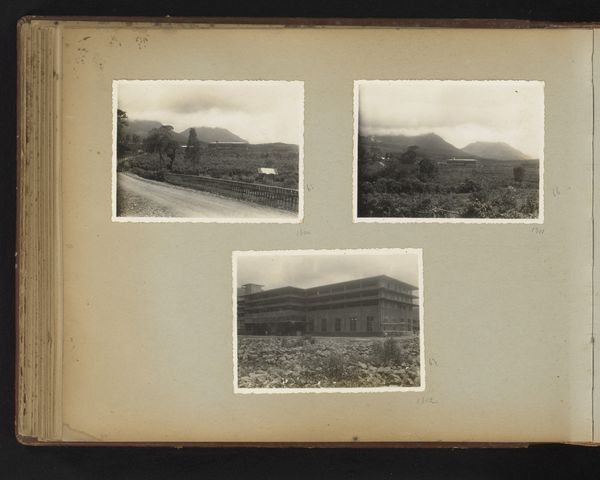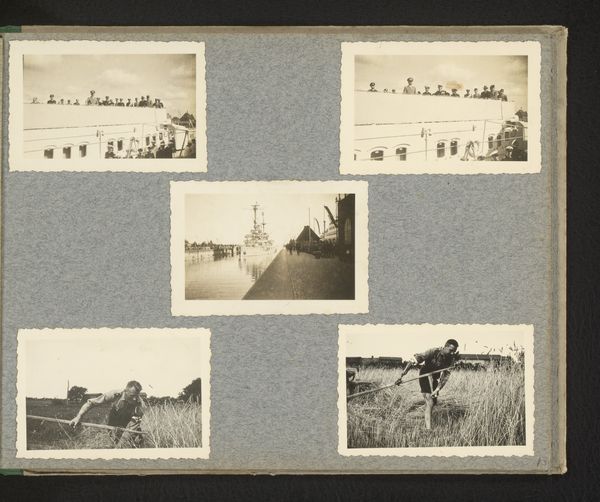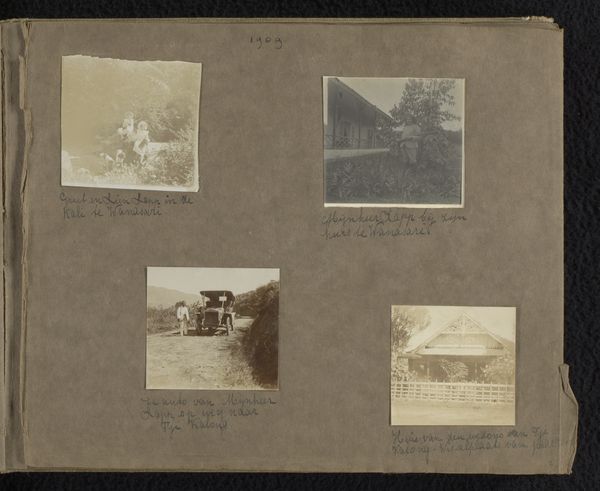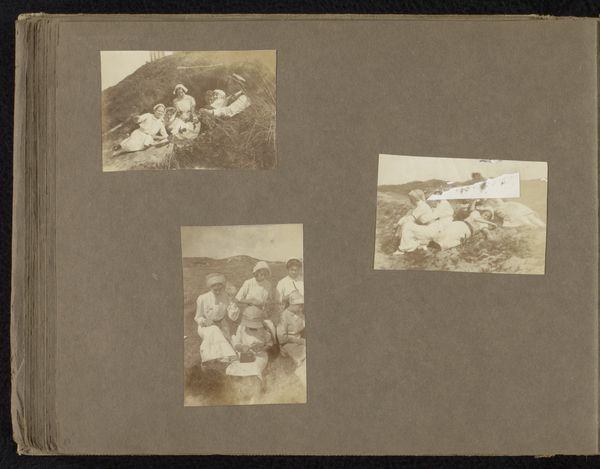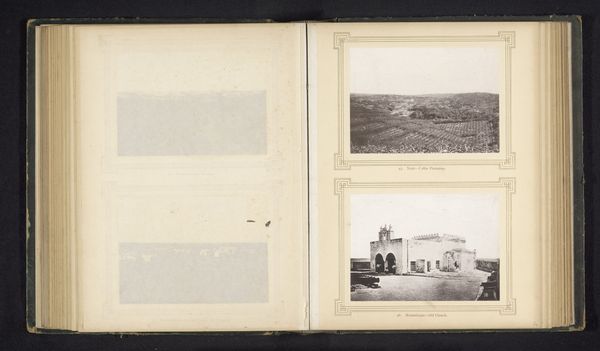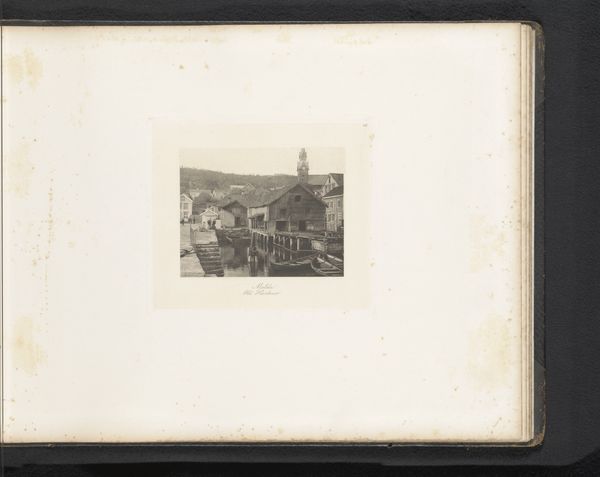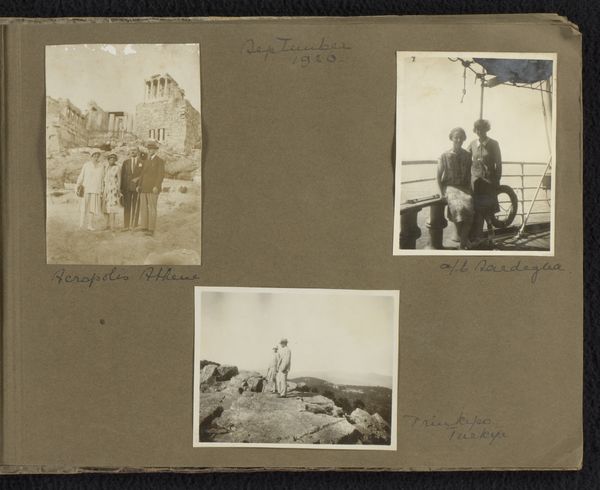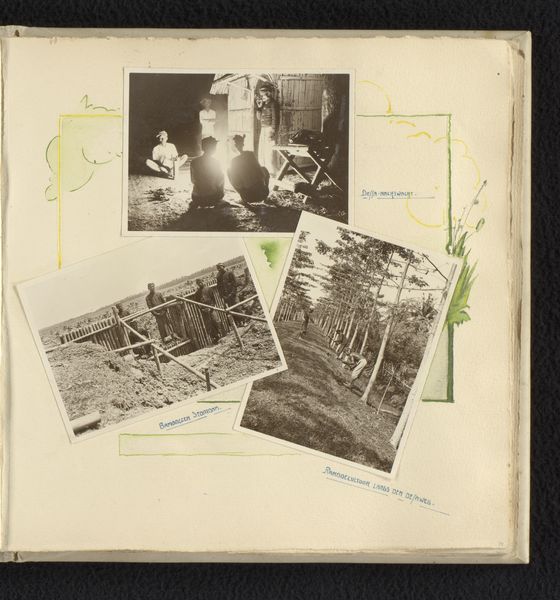
Dimensions: height 240 mm, width 240 mm
Copyright: Rijks Museum: Open Domain
Curator: Ah, here's a piece that whispers stories of faraway lands. This gelatin-silver print, entitled "Rijstoogst in Grobogan", captures a rice harvest somewhere between 1910 and 1928. It feels almost like a postcard from a forgotten time. Editor: A postcard, perhaps, carrying the somber hues of labor and landscape. The monochromatic tones and sharp contrast lend it an immediate, unsettling directness. The arrangement on the album page breaks any illusion. The borders become their own statement, pushing back against what might otherwise invite aesthetic absorption in bucolic charm. Curator: You're drawn to the starkness, then. For me, the composition is a beautiful accident. These individual photographs mounted almost haphazardly, but creating a narrative whole—you've got a scene with intense action on the harvest front. Can't you almost hear the sounds of the fields? Editor: No, no sound comes for me. What strikes is the formal play between the flatness and implied depth, see? The figures become compositional elements and it’s unclear who these artisans were, nor their role in the album as a cohesive artistic vision. How are we to see the rice harvest as more than decorative? Curator: It asks us to think beyond decoration, beyond surface. The theme is definitely more genre painting, though the perspective leans more towards post-impressionism because the work isn’t perfectly capturing form, but is interpreting it from another perspective. If one looks deeper, the photo hints at lives lived within landscape and hard labor of people involved in the cycle of life and death that feeds humanity. There are notes from a different world there... Editor: Well said! Perhaps those other photographs offer a bit of counterpoint, echoing the main theme but each with slight shifts in tone. Even these elements have an order and form and yet ultimately question each other because the relationships between the planes creates movement and questions about scale in this photograph. Curator: Exactly. Maybe it isn't a purely decorative vision, but the attempt to bring far-flung experiences close, holding those complexities between aesthetic admiration and social witness. Editor: Yes. Form meets narrative meets feeling… That final piece makes for quite the harmonious reflection.
Comments
No comments
Be the first to comment and join the conversation on the ultimate creative platform.
